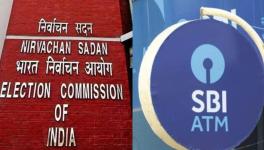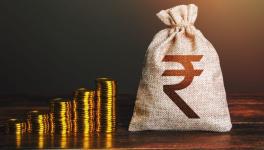Banks Recover only 13% of Rs 10 Lakh Crore Loans Written off in Last 5 Years
Representational use only.
Banks have recovered only 13% of a staggering amount of loans worth more than Rs 10 lakh crore loans written off in the last five years.
According to a right-to-information request filed by The Indian Express with the Reserve Bank of India (RBI), banks were able to recover just Rs 1,32,036 crore by writing off debts in the last five years. The write-off helped banks reduce their non-performing assets (NPAs) by Rs 10,09,510 crore.
The mega write-off, which would have been enough to eliminate 61% of the projected gross fiscal deficit of Rs 16.61 lakh crore for 2022–23, reduced NPAs to Rs 7,29,388 crore as of March 2022, the RTI revealed. According to the RBI, write-offs reduced NPAs by Rs 13,22,309 crore in the last 10 years.
“Following write-off, banks are expected to keep trying to recover the loan using a variety of strategies. They must also make provisions. As the written-off value is subtracted from the earnings, the tax obligation would also decrease,” according to Sanjay Agarwal, a banking analyst at Care Ratings.
When a loan’s principal payment is 90 days late, it becomes an NPA. Subsequently, it is written off when there is a negligible chance of recovery. Writing off a loan results in the removal of the NPA from the bank’s asset book is recorded as a loss. It also helps the bank in lowering both its NPAs and taxes.
A rough computation puts the entire amount of defaulted loans at Rs 16.06 lakh crore (including write-offs but excluding loans recovered through write-offs in five years). When write-offs are taken into account, the overall NPA ratio rises to 13.10% of loans from the banks’ stated 5.9%.
As expected, public sector banks reported the majority of write-offs, amounting to Rs 734,738 crore, or around 73% of the total, according to the RBI.
When asked about its write-off recommendations, the RBI said: “It may be noted that in a deregulated credit environment, banks have been advised to take credit-related decisions including waiving off bad loans as per their commercial assessment of the viability of the loans in accordance with their board approved policies subject to prudential norms issued by the RBI.”
The policy on loan recovery, according to the RBI’s reply to the RTI, must specify the means of collecting debts owed, the targeted level of reduction (period-wise), the standards for permitted sacrifice and waivers, the considerations to be made before considering waivers, decision-making levels, reporting to higher authorities, and the monitoring of write-off and waiver cases.
“Recovery might be years long. It’s been spaced out across many years,” added Agarwal.
The RBI didn’t disclose the top loan write-offs. “Information on borrower-wise loan write-off is not collected by us and, thus, not accessible to us,” the central bank said. Banks have written off several huge and minor NPAs throughout the years without disclosing the names of the debtors.
In the last five years, the NPAs of the State Bank of India (SBI) reduced by Rs 2,04,486 crore, Punjab National Bank (PNB) by Rs 67,214 crore, Bank of Baroda by Rs 66,711 crore ICICI Bank by Rs 50,514 crore.
According to an RBI explanatory note, banks regularly write down NPAs to balance their books. “However, a significant percentage of this write-off is technical in nature. Its main goals are to simplify the balance sheet and increase tax efficiency.”
Loans are “technically wiped off from the books at the head office in ‘Technically Written Off’ accounts but the right to recovery is not waived. Additionally, write-offs are often applied against the total amount of provisions made for such loans. The provisions made for those loans move back into the banks’ profit and loss accounts whenever they are recovered”, the note states.
Get the latest reports & analysis with people's perspective on Protests, movements & deep analytical videos, discussions of the current affairs in your Telegram app. Subscribe to NewsClick's Telegram channel & get Real-Time updates on stories, as they get published on our website.
























